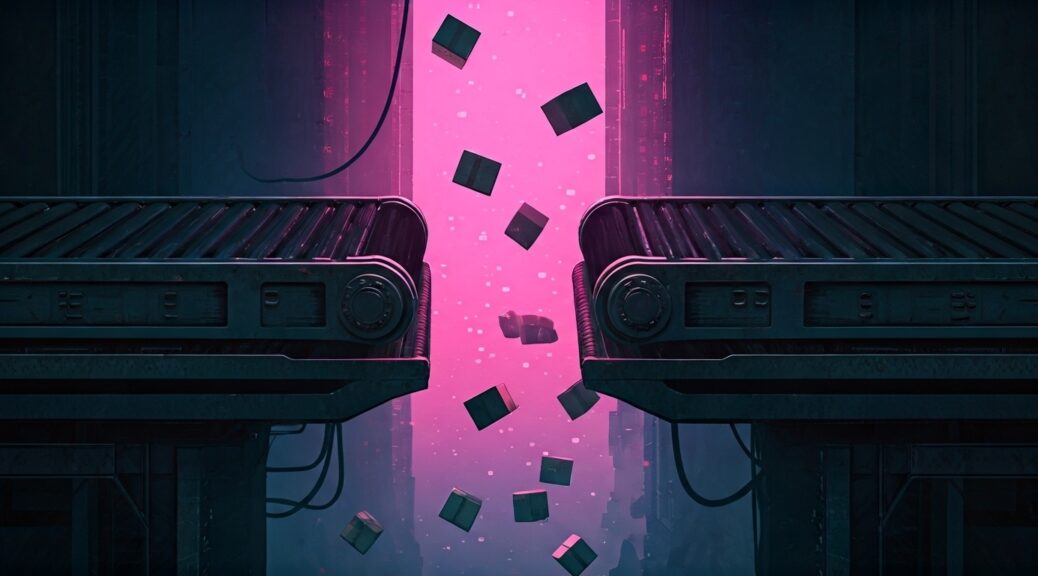Executive Summary
In many enterprises, digital transformation is celebrated in boardrooms, yet quietly undermined at the operational front lines. The root problem? Manual bridging. Employees still spend hours each week merging spreadsheets, chasing down email threads, and manually transferring data across systems that refuse to speak to one another. While these efforts keep the lights on, they drain productivity, introduce delays, and perpetuate brittle workflows.
The invisible cost of this glue work is enormous. It masks the inefficiencies of disconnected systems and delays decision-making when speed matters most. Worse, as enterprises scale, these manual handoffs multiply in complexity. What begins as a few spreadsheets soon becomes a tangle of inboxes, approvals, and version mismatches across departments and external partners.
There is a better way. Intelligent Transaction Networks (ITN) offer a real-time, event-driven alternative. By synchronizing data across internal teams and external parties in motion, ITN eliminates the glue work entirely. Employees no longer need to act as human routers, manually bridging gaps that technology should have solved years ago. With ITN, the business becomes a pipeline — not a patchwork.
The Hidden Cost of Manual Bridging
Anya, an operations supervisor at a mid-sized manufacturer, begins her day like she always does — juggling spreadsheets, cross-checking numbers, and scanning emails for updates from finance. She manually merges the latest invoice adjustments from a shared email thread into her “master” Excel file, then cuts and pastes the relevant data into the ERP. Only then does she send an update to the shipping team.
If Anya steps away or takes a day off, the workflow stalls. Colleagues wait for updated files. Vendors call in asking about status. Finance sends reminders for updates that already happened — just not in the system they see. No one has the full picture. Everyone operates on partial, delayed, or conflicting information.
This is the silent tax of glue work. Anya is highly competent. Her peers are diligent. But the process is fundamentally broken. Each manual step adds latency. Each touchpoint risks human error. Every system behaves like an island, and employees are left building bridges with duct tape and diligence.
The True Cost of Manual Data Handling
Most enterprises dramatically underestimate how much time and cost is wasted on manual bridging. The tools appear harmless — spreadsheets, emails, shared folders — but the cumulative drag is immense.
- 30% to 40% percent of mid-sized enterprises still rely on human-driven merges or email reconciliations for critical updates.
- Each added manual step introduces a 2 – 4% error rate, which compounds across departments and leads to flawed decision-making.
- Enterprises that shift to ITN-powered, event-driven workflows report 50% faster transaction cycles, with measurable drops in operational cost and error rates.
The more partners, departments, and updates involved, the worse it gets. Every manual reconciliation creates a branching point for mistakes. Data versions drift. Teams lose trust in the “latest file.” The business slows down, not from lack of talent, but from outdated methods that no longer scale.
Why Manual Bridging Persists in Enterprises
Enterprises do not cling to manual workflows because they want to. They do so because the alternatives often feel out of reach. Leaders invest in digital platforms, but many still fail to connect the dots between internal systems and external data flows. Automation is pursued departmentally. Spreadsheets live on desktops. Slack, email, and shared folders become workarounds instead of solutions.
Three key reasons why glue work persists:
- Invisible Complexity: Manual bridging often hides behind helpful employees who “just make it work.” The effort is silent, but the cost is real.
- Tool Fragmentation: Teams toggle between CRMs, ERPs, procurement portals, and spreadsheets. None are connected. The person becomes the connector.
- Automation Myopia: RPA and low-code tools target small workflows but ignore the broader business context. What is automated in one silo is manually rekeyed in another.
This status quo not only slows the enterprise, but it also exhausts it. High performers become overburdened with coordination tasks. Projects stall waiting on reconciled data. B2B collaboration becomes a game of telephone, played across tools that were never built to operate in sync.
ITN: Automating Data Exchange to Eliminate Bridging Work
The solution is not another shared folder or a slightly faster spreadsheet. The solution is to eliminate the need for manual bridging entirely. Intelligent Transaction Networks (ITN) do just that — structuring and synchronizing data across internal teams and external partners in real time.
With ITN in place:
- Real-Time Synchronization: Transactions flow automatically. Inventory updates, invoice approvals, and partner changes all trigger real-time data movement across systems.
- Shared Visibility: Finance, operations, compliance, and external parties all see the same source of truth. No more asking “who has the latest version?”
- Incremental Adoption: ITN does not require a massive overhaul. Enterprises can start with one high-friction process — like invoice reconciliation — and expand gradually.
ITN replaces the daily spreadsheet shuffle with deterministic flows. Emails are replaced with structured events. Manual rekeying is eliminated by design. Instead of bridging gaps, employees operate in lockstep with systems that are already aligned.
The Competitive Advantage of ITN-Powered Collaboration
Replacing manual glue work with intelligent pipelines creates a compounding advantage across the business:
- Employees regain time. No more hours lost reconciling versions or chasing approvals.
- Partners stay in sync. Real-time updates reduce miscommunications, delays, and friction in B2B workflows.
- Decision-making accelerates. With accurate, synchronized data available to all parties, executives act faster and with greater confidence.
Results from ITN adopters speak for themselves:
- 60% reduction in operational errors, particularly in finance and supply chain workflows.
- 5x faster internal and external cycle times, from purchase orders to payment approvals.
- Stronger B2B retention and growth, driven by transparency and execution speed.
Glue work may have once been necessary. With ITN, it is obsolete. Enterprises can now scale without increasing complexity. Teams can collaborate without duplicating effort. Partners can integrate without costly custom builds.
Why Manual Tasks Disappear in an ITN World
The power of ITN lies not just in automation, but in intelligence. Event-driven AI is what allows ITN to interpret context, validate data, and route information without requiring human prompts.
For example:
- When a supplier updates a delivery estimate, AI-driven logic validates the new timeline and pushes it downstream to finance and operations.
- If a compliance flag is triggered, the system automatically pauses related payments and notifies the relevant teams — no emails required.
- AI maintains the integrity of the process end-to-end, ensuring every transaction is traceable, explainable, and real-time.
This is not predictive AI guessing what might happen. It is deterministic AI executing what must happen — in real time, without relying on people to bridge the gaps.
The Future of Enterprise Collaboration: Real-Time, Cross-Company Synchronization
Manual bridging is a relic of an older operating model — one where people made up for what systems could not do. But today, that model holds back even the most digitally mature enterprises.
As industries move toward full-cycle automation, the winners will not be those who have the best spreadsheets. They will be those who eliminate the need for them altogether. ITN creates the conditions for real-time, trusted, cross-company collaboration. It removes friction. It removes delay. It removes uncertainty.
What remains is a business that can move as one — internally and externally — with the speed, precision, and trust that modern markets demand.
Is Your Business Still Gluing Processes Together?
How many of your workflows still rely on emails, spreadsheets, or Slack messages to fill the gaps between systems? How much strategic potential is lost because people are stuck managing workarounds?
The shift to real-time, AI-executed, ITN-powered collaboration is already happening. It is not about adding one more tool. It is about removing the glue — and replacing it with something built to last.
The only question left is: will your enterprise lead this transformation, or be left behind?









